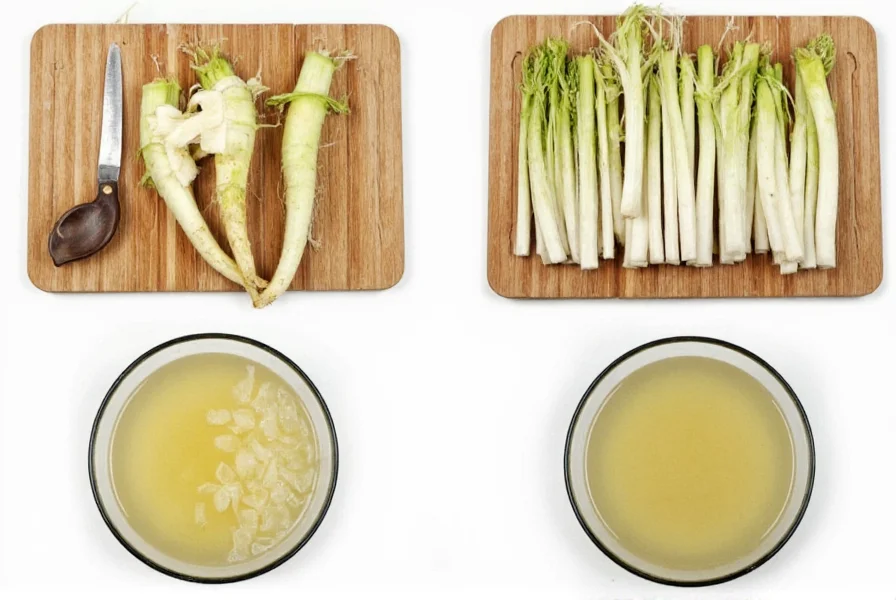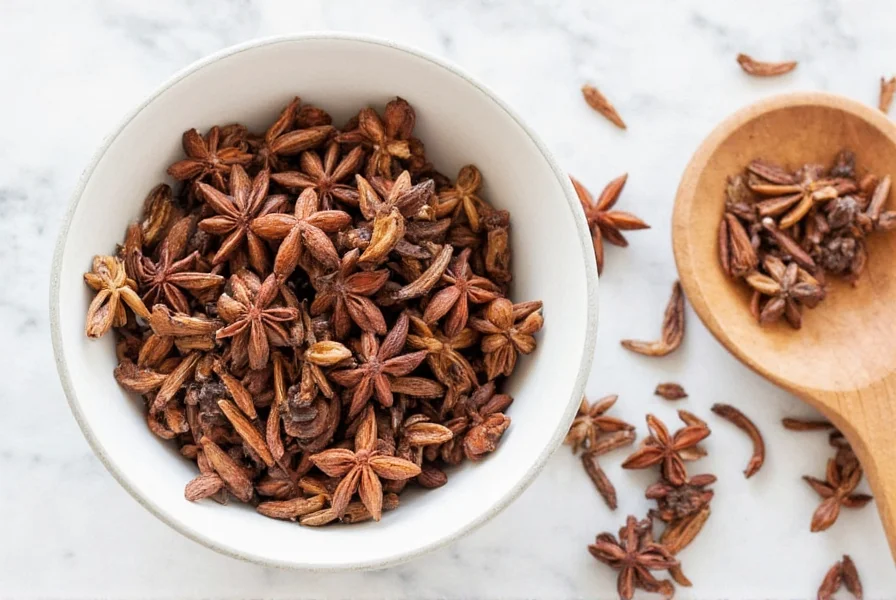Many home cooks confuse “anise root” with actual anise plant components, but the reality is more nuanced. True anise (Pimpinella anisum) produces aromatic seeds, not a substantial root vegetable. What culinary references call “anise root” is almost always burdock root (Arctium lappa), known as “gobo” in Japanese and Korean cuisine. This slender root vegetable delivers a delicate earthy flavor with subtle anise notes when prepared correctly, making it valuable in soups, stews, and stir-fries.
Understanding Burdock Root: The True “Anise Root”
Burdock root grows wild across Europe and Asia and has become a staple in East Asian cooking. Unlike true anise seeds, which provide immediate aromatic punch, burdock root offers a more subtle flavor profile that develops during cooking. The root contains inulin, a prebiotic fiber that supports gut health but can cause digestive discomfort if consumed in excess by sensitive individuals.
When selecting burdock root for cooking, look for firm, straight specimens about 1-2 inches in diameter with smooth brown skin. Avoid roots with soft spots, cracks, or excessive branching. Fresh burdock should feel heavy for its size, indicating good moisture content. Store unpeeled roots wrapped in a damp paper towel inside a perforated plastic bag in your refrigerator's crisper drawer for up to two weeks.
Essential Preparation Techniques for Burdock Root
Proper preparation is crucial for enjoyable burdock root dishes. The root oxidizes quickly when cut, turning brown within minutes. To prevent this discoloration and reduce bitterness:
- Scrub the root thoroughly with a vegetable brush under cold running water
- Peel using a vegetable peeler or knife, removing only the thin outer layer
- Immediately place sliced pieces in a bowl of cold water with 1-2 tablespoons of vinegar or lemon juice
- Soak for 10-15 minutes before cooking to remove excess tannins
For optimal texture, slice burdock root thinly (1/8 inch) on a diagonal for stir-fries, or cut into 2-inch chunks for soups and stews. The diagonal cut exposes more surface area, allowing better flavor absorption during cooking.
| Preparation Method | Soaking Time | Best For |
|---|---|---|
| Vinegar Water (1 tbsp per quart) | 10-15 minutes | Stir-fries, quick cooking methods |
| Salt Water (1 tsp per quart) | 20-30 minutes | Boiling, soups, stews |
| Plain Water Change Every 10 min | 30-45 minutes | Raw preparations, salads |
Mastering Cooking Methods for Burdock Root
Each cooking technique transforms burdock root's flavor and texture differently. Understanding these methods helps you achieve perfect results every time when preparing what many call “anise root.”
Boiling and Simmering
Boiling remains the most accessible method for beginners learning how to cook anise root substitutes. After proper soaking, place burdock in a pot with enough water to cover, add a pinch of salt, and bring to a gentle boil. Simmer for 15-20 minutes until tender but still slightly firm. For traditional Korean burdock root tea, simmer sliced roots for 45-60 minutes with dried jujubes and ginger.
Stir-Frying for Best Texture
Stir-frying delivers the most vibrant flavor when cooking burdock root. Heat 1-2 tablespoons of neutral oil in a wok over medium-high heat. Add drained burdock slices and stir-fry for 3-4 minutes until they begin to soften. Add 2 tablespoons of mirin or rice wine, cover, and steam for another 2-3 minutes. Finish with a drizzle of sesame oil and toasted sesame seeds. This technique for how to prepare burdock root for cooking preserves its delicate crunch while developing complex flavors.

Roasting for Deep Flavor Development
Roasting transforms burdock root's subtle anise notes into rich, caramelized complexity. Toss 1-inch chunks with 1 tablespoon olive oil, 1 teaspoon soy sauce, and 1/2 teaspoon maple syrup. Spread on a parchment-lined baking sheet and roast at 400°F (200°C) for 25-30 minutes, flipping halfway through. The natural sugars caramelize beautifully, creating what many describe as the best way to cook burdock root for maximum flavor.
Delicious Recipe Applications
Now that you understand how to cook anise root properly, try these authentic applications that showcase burdock's unique qualities:
Kinpira Gobo (Japanese Stir-Fried Burdock)
This classic side dish demonstrates traditional Japanese techniques for cooking what Westerners often call “anise root.” After proper preparation, stir-fry 2 cups sliced burdock with 1 sliced carrot for 5 minutes. Add 3 tablespoons soy sauce, 2 tablespoons mirin, and 1 teaspoon sugar. Cover and steam for 3 minutes, then uncover and cook until liquid evaporates. Garnish with toasted sesame seeds. This method for how to prepare burdock root for cooking yields a dish with perfect balance of sweet, salty, and earthy flavors.
Burdock Root and Pork Soup (Japanese Tonjiru)
For a comforting meal showcasing how to cook anise root in traditional Asian cuisine, combine 1 cup sliced burdock, 1/2 pound pork belly, 1 daikon radish (peeled and cubed), and 6 cups dashi broth. Simmer for 30 minutes until vegetables are tender. Add 2 tablespoons soy sauce and 1 tablespoon sake before serving. This recipe for anise-flavored root vegetables demonstrates how burdock root enhances savory broths with its subtle complexity.

Flavor Pairings and Culinary Tips
Burdock root's mild anise-like flavor pairs beautifully with complementary ingredients. When exploring how to cook anise root substitutes, consider these combinations:
- Soy-based sauces - Enhance umami while balancing earthiness
- Rice wine or mirin - Adds sweetness that complements natural flavors
- Ginger and garlic - Provides aromatic contrast to subtle anise notes
- Sesame oil - Adds nuttiness that enhances overall complexity
- Mushrooms - Creates layered earthy flavor profiles
Avoid pairing burdock root with strongly acidic ingredients early in cooking, as this can toughen the fibers. Instead, add citrus or vinegar toward the end of preparation for optimal texture when learning how to prepare burdock root for cooking.
Common Mistakes to Avoid
Many home cooks make these errors when attempting to cook what they believe is anise root:
- Skipping the soaking step - Leads to bitter, unpalatable results
- Overcooking - Turns burdock mushy rather than pleasantly tender-crisp
- Using dull knives - Crushes rather than cleanly cuts the fibers
- Confusing with true anise - Expecting seed-like intensity from the root
- Improper storage - Causes rapid deterioration of quality
Remember that burdock root requires different handling than true anise seeds. While anise seeds work well in baking and desserts, burdock root shines in savory applications. Understanding this distinction represents a crucial step in mastering how to cook anise root properly.
Frequently Asked Questions
Is burdock root the same as true anise root?
No, true anise (Pimpinella anisum) doesn't produce an edible root vegetable. What recipes call “anise root” is almost always burdock root (Arctium lappa), which has a mild anise-like flavor when cooked. The confusion stems from burdock's subtle licorice notes that resemble anise, though they're botanically unrelated.
How do I reduce the bitterness in burdock root?
To reduce bitterness when preparing what many call “anise root,” soak sliced burdock in vinegar water (1 tbsp vinegar per quart of water) for 10-15 minutes immediately after cutting. The acid prevents oxidation and draws out bitter compounds. Changing the water 2-3 times during soaking further reduces bitterness while preserving texture.
Can I eat burdock root raw?
Yes, but proper preparation is essential for enjoyable raw consumption. Thinly slice or julienne burdock root, then soak in acidulated water for at least 30 minutes, changing the water several times. Raw burdock has a crisp texture similar to jicama but with more pronounced earthy notes. It works well in salads when combined with citrus dressings and complementary vegetables like carrots and radishes.
What’s the best way to store cooked burdock root?
Store cooked burdock root in an airtight container with some of its cooking liquid to maintain moisture. Properly stored, it keeps for 3-4 days in the refrigerator. For longer storage, freeze cooked burdock in portion-sized containers for up to 3 months. Thaw overnight in the refrigerator before reheating gently to preserve texture when using what many refer to as “anise root” in meal preparation.
Are there any health benefits to cooking with burdock root?
Yes, burdock root contains inulin (a prebiotic fiber), antioxidants, and essential minerals. When properly prepared as what many call “anise root,” it supports digestive health, reduces inflammation, and may help regulate blood sugar. The cooking process makes these nutrients more bioavailable while reducing potential digestive discomfort from raw consumption. Traditional medicine systems have valued burdock root for centuries for these properties.











 浙公网安备
33010002000092号
浙公网安备
33010002000092号 浙B2-20120091-4
浙B2-20120091-4